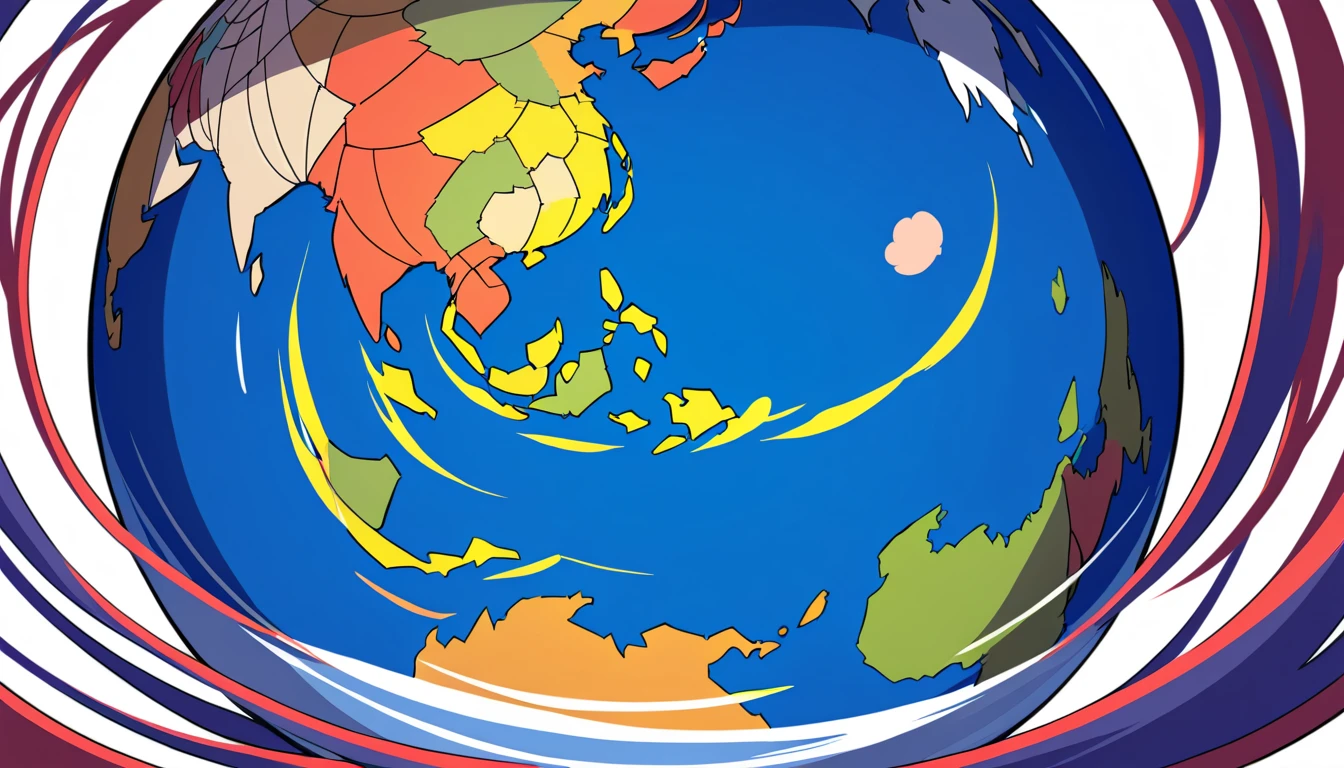The Division of Ideologies in the Global Arena
The current global political landscape reflects a profound division of ideologies, which serves as a backdrop for examining contemporary political actions and their ramifications. This divide can essentially be categorized into three primary groups: the majority striving for peaceful coexistence, a minority advancing self-serving ideologies, and a smaller contingent advocating for humanitarian compassion. The struggle among these factions has become increasingly pronounced, catalyzed not only by a rapidly increasing global population but also by the unprecedented speed of communication technologies that have reshaped how ideas are exchanged and conflicts arise.
The majority of individuals worldwide seek stability and harmony in their lives, pursuing opportunities for personal and communal growth. This demographic emphasizes cooperation, diplomacy, and a desire for societal advancement. However, they often find themselves at odds with a minority who prioritize self-interest, whether it be through authoritarian governance, nationalism, or economic exploitation, all of which can lead to instability and strife on a broader scale. The actions taken by this minority, fuelled by a hyper-partisan approach, exacerbate tensions and diminish the possibilities for collaborative solutions to pressing global issues.
Compounding these challenges is the presence of a smaller group committed to humanitarian ideals. This group champions the rights of vulnerable populations and promotes global justice, yet they often struggle to gain traction against louder, more aggressive ideologies. Historically, the conflict between these varying perspectives is not a new phenomenon; however, its intensity has escalated in recent times due to factors such as digital connectivity, which enables ideas—both constructive and divisive—to spread rapidly across borders.
Thus, as we assess the current political landscape, it is crucial to understand not only the motivations behind these diverging ideologies but also the broader implications they hold for global governance, international relations, and social cohesion. The intense and diverging beliefs often force nations into confrontations that could otherwise be mitigated or resolved through persistent dialogue and mutual understanding.
Trump’s Domestic and International Engagements
Donald Trump, the 45th President of the United States, has had a significant impact on both domestic and international fronts during his tenure. His state visit to the United Kingdom exemplified this dual engagement, marked by a series of carefully managed interactions characterized by a mix of diplomatic protocol and personal warmth. During his visit, Trump maintained a cautious approach, strategically employing flattery to foster goodwill with his British counterparts. The manner in which he navigated the royal visit and meetings with Prime Minister Theresa May reflected his broader strategy to enhance bilateral relations while often aligning U.S. interests with those of the UK.
On the international stage, Trump’s address at the United Nations General Assembly received considerable attention. The speech was notably lengthy, covering various topics, including America’s foreign policy priorities, economic achievements, and his stance on multilateralism. His approach to international relations was often met with mixed reactions, highlighting the polarized views on his administration’s strategy. While supportive audiences praised his directness, critics argued that his confrontational style undermined longstanding alliances, raising concerns over the future of global diplomacy.
Domestically, Trump’s use of federal power prompted intense debate. His intervention in certain U.S. cities to address crime, often justified as a necessary response to unrest, raised concerns regarding federal overreach. Critics argued that these actions could disrupt local governance and exacerbate tensions rather than alleviate them. Furthermore, Trump’s outreach to military leaders indicated an intention to bolster support from defense sectors, yet this practice raised flags about the politicization of the military. The implications of this engagement are profound, as they challenge the traditional boundaries between civilian leadership and military influence.
The Israel-Hamas Conflict and the Framework for Peace
The Israel-Hamas conflict has long been a contentious issue within the global political landscape, and recent developments have underscored the complexity of securing lasting peace in the region. A significant peace agreement was reached recently, which marked a pivotal moment in the protracted conflict. One of the most critical aspects of this peace plan was a negotiated hostage exchange. This agreement aimed to facilitate dialogue between the parties, demonstrating a potential pathway towards a broader resolution of tensions.
However, observers have highlighted the fragile nature of this peace. The dynamics of the Israel-Hamas relationship remain volatile, with many variables impacting the longevity of any accord. The underlying issues, particularly the two-state solution, continue to present significant challenges. Promoting an environment conducive to peace requires not only negotiations but also addressing the contentious topic of illegal settlements within the occupied territories. These settlements exacerbate tensions and create obstacles for any comprehensive agreement, as they further entrench divisions and complicate future negotiations.
Moreover, government control over media narratives plays a crucial role in shaping public perception and, ultimately, influencing political actions. In Israel, media outlets’ portrayal of events can either ignite conflict or foster an understanding of the need for peace, thus impacting the populace’s support for a two-state solution. This influence must be acknowledged when analyzing the broader implications of any peace agreement.
The path to peace in the Israel-Hamas conflict is laden with complexities and requires steadfast commitment from both parties, as well as support from the international community. Addressing longstanding grievances will be essential to forge a sustainable resolution, ensuring a framework for peace that is acceptable to both Israelis and Palestinians. As such, the resolution of this conflict remains a focal point necessitating careful consideration and strategic dialogue moving forward.
Future Outlook: Hopes and Dilemmas in the Peace Process
The ongoing peace process between Israel and Palestine has faced numerous challenges, exacerbated by the shifting priorities of global powers. As the focus of U.S. foreign policy transitions towards emergent crises, such as the war in Ukraine, the long-term commitment to achieving peace in the Middle East raises important questions regarding stability and continuity. The evolution of Trump’s actions during his presidency has also cast a shadow over the future of the peace plan, creating uncertainty among various stakeholders.
One of the central concerns surrounding the peace process is the perceived lack of sustained engagement from U.S. leadership. Trump’s approach to foreign relations has often been characterized by rapid shifts in focus and abrupt policy changes, leading many to question the viability of any agreements brokered during his administration. This unpredictability might contribute to a weakened commitment from both Israeli and Palestinian leaders, as diplomatic momentum can be easily disrupted by changes in international priorities. As U.S. interest pivots away from the region, there are fears that this disengagement could lead to renewed tensions and instability.
Furthermore, the geopolitical landscape continues to evolve, introducing new complexities to the situation. Regional players, such as Iran and Saudi Arabia, are becoming increasingly engaged in the dynamics of the conflict, influencing the stability of peace efforts. The proliferation of other global crises, notably the conflict in Ukraine, steals attention from long-standing issues like the Israel-Palestine conflict, leading to further doubts about the future commitment of the international community to facilitate peace.
In examining these perspectives, it is evident that while there remains hope for resolution, significant dilemmas persist. The intersection of shifting U.S. priorities and Trump’s historical approach underscores the complexities that dictate the potential success or failure of peace initiatives in this enduring conflict.




